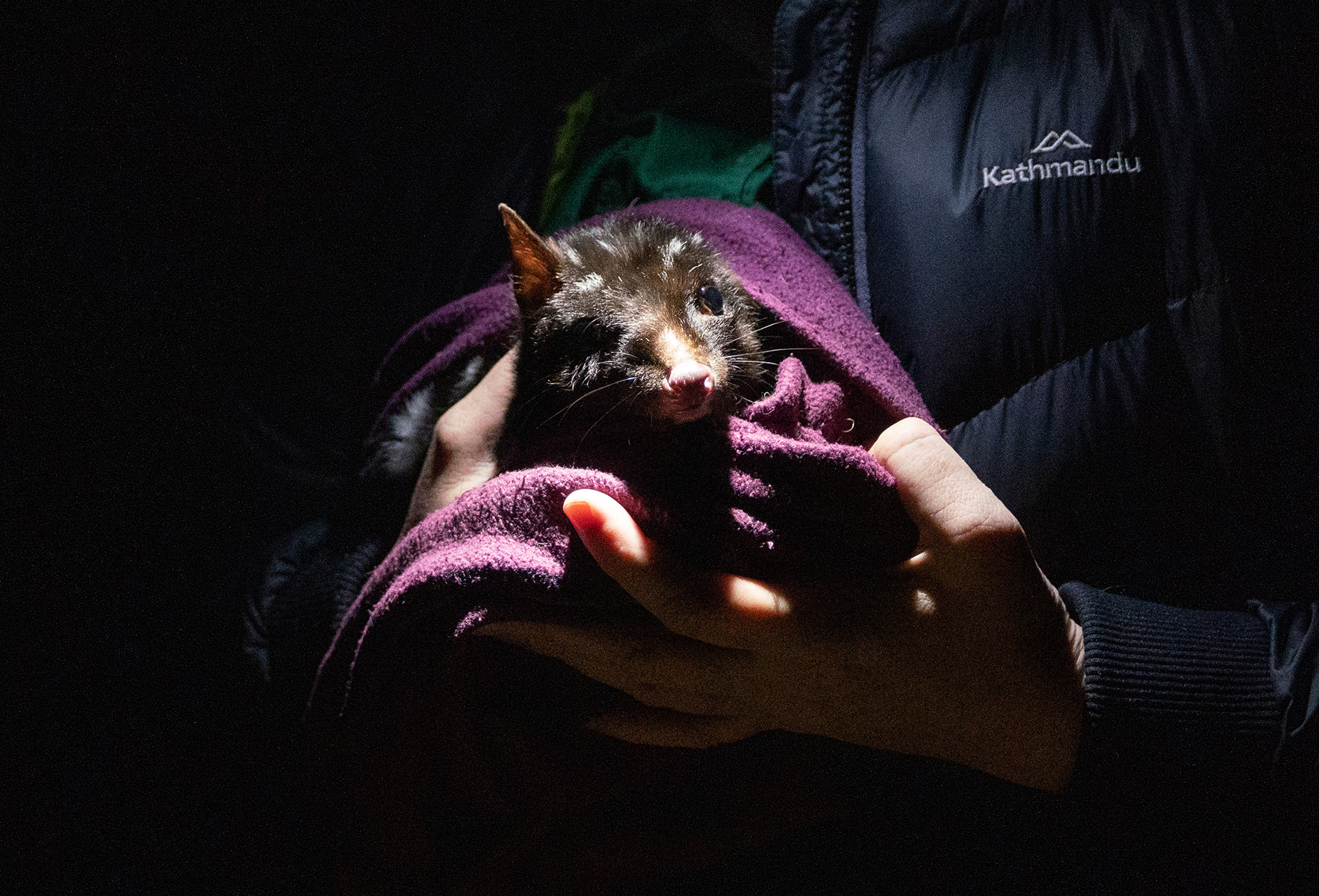Everybody needs good neighbours: resident quolls help newcomers settle in at Mulligans Flat

GPS tracking collars have revealed how newly reintroduced eastern quolls are settling in at Mulligans Flat Woodland Sanctuary, with quolls who were born at the sanctuary accepting their new neighbours with open paws.
The findings come from a new study led by researchers at The Australian National University (ANU).
Lead author Dr Belinda Wilson said the results are “welcome news”.

Dr Belinda Wilson has been tracking quolls at Mulligans Flat in Canberra. Photo: Tracey Nearmy/ANU
“We’re at capacity at Mulligans Flat, so if we bring in new quolls for their fresh genetics, it’s important for us to know whether they’ll be absorbed into the population, or excluded,” she said.
“Thankfully, the new quolls were accepted, even sharing dens with the other residents. It was sweet to see.”
Dr Wilson and her team placed tiny GPS collars on eight newcomers and eight resident quolls.
This provided invaluable data on how the quolls moved throughout the landscape, and how they interacted with each other.
“While the new quolls initially moved around the entirety of Mulligans Flat, over time the distances they travelled became smaller and they settled into similar-sized home ranges to the residents, possibly because of the ‘anchoring’ effect of their neighbours,” Dr Wilson said.
“We had a particular den that we referred to as the ‘megaden’. At one point we had seven of the quolls hanging out there together. That showed up as an area of high activity on our maps.”
Eastern quolls are a carnivorous marsupial that became extinct on the Australian mainland in the 1960s.
In a partnership between ANU, ACT Government, and the Woodlands and Wetlands Trust, the eastern quolls were reintroduced into Mulligans Flat in 2016.
“Even though eastern quolls are known to be solitary, we now know that reintroducing them into the same area as residents can actually help them stick,” Dr Wilson said.
“As we manage the population and bring ‘fresh blood’ into the sanctuary to avoid inbreeding, we’ll also send some of our extra quolls to our sister sanctuaries – that way Mulligans Flat can contribute to eastern quoll recovery across Australia’s growing network of sanctuaries.”
Curious citizen scientists can see the quolls for themselves by joining a Twilight Tour at Wildbark Learning Centre.
This research has been published in Biodiversity and Conservation.
